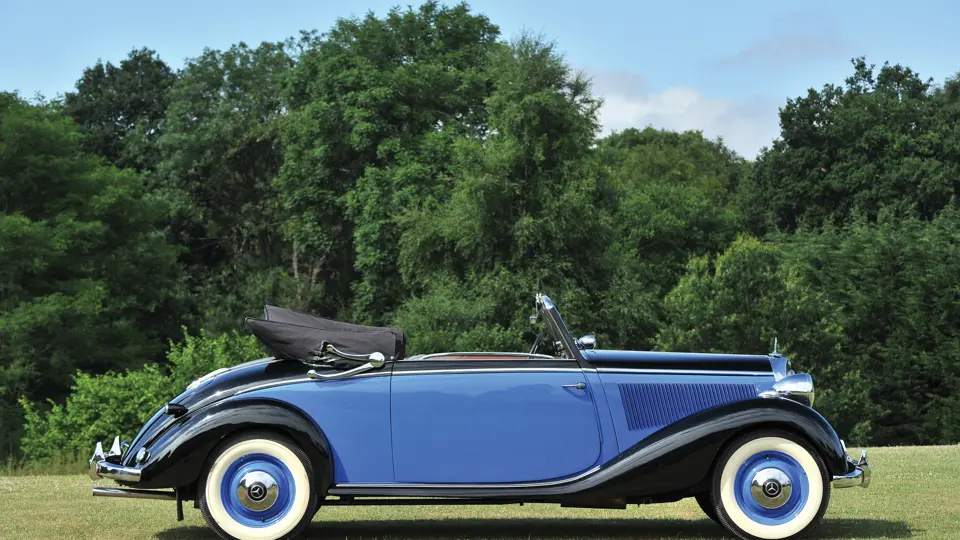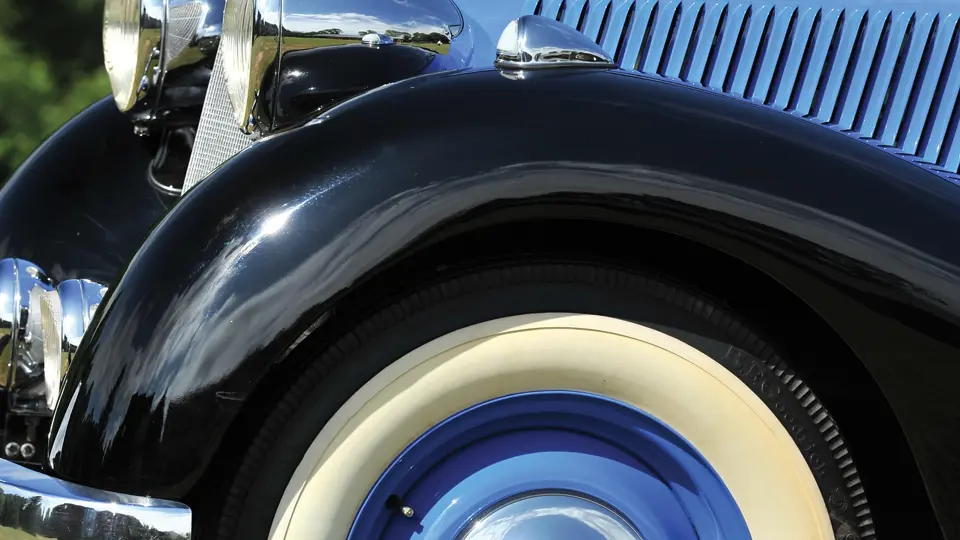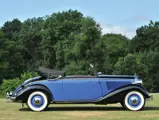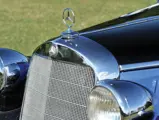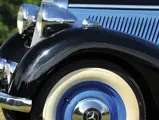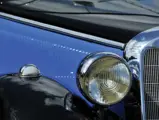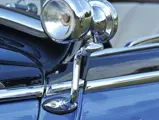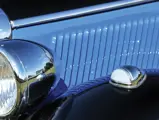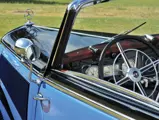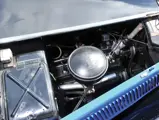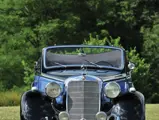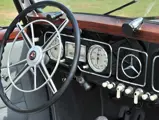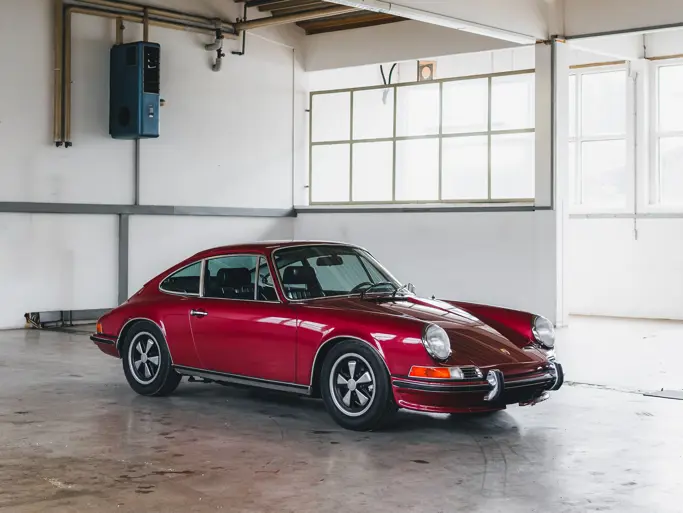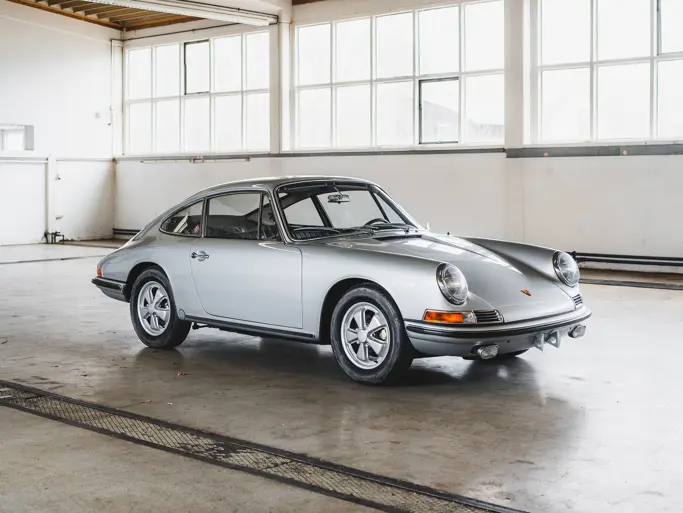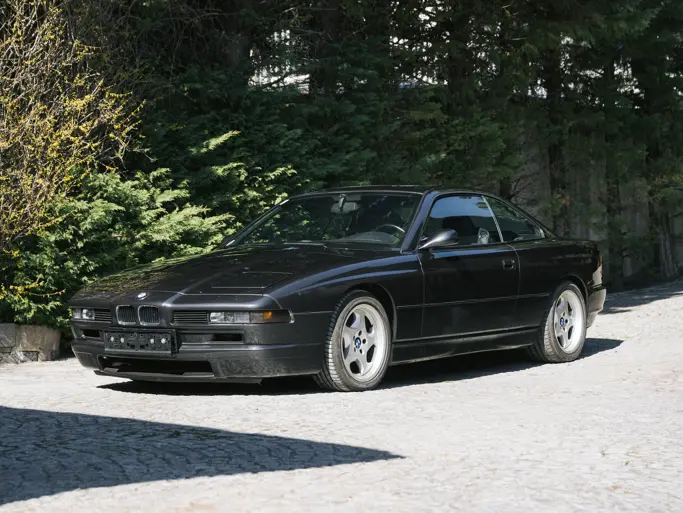55 hp, 2,289 cc inline L-head six-cylinder engine, four-speed manual gearbox, four-wheel independent suspension, and four-wheel hydraulic drum brakes. Wheelbase: 3,050 mm
In 1938, the short-chassis Type 230 N was augmented by a 3,050-millimetre sibling, which was designated simply as “230”, with an internal code of W153. The engine was bored out one millimetre, to 2,289 cubic centimetres, although the smaller powerplant was still available. The W153 was built into the Second World War.
This tidy 230 Cabriolet A was originally delivered to Norway in January 1941. In place of the frequently seen side-facing Cabriolet A rear seat, it has forward-facing seats for two, albeit with less legroom. They also fold to form a parcel or luggage shelf. As the recipient of an older cosmetic restoration in blue with black wings, the car still presents well, but it is showing some minor orange peel and older brightwork that has been repeatedly buffed out. It carries coachwork from Mercedes’ Sindelfingen works and is marked as body number 850811.
The hood is black cloth, and the tan liner shows some stains around the rear window. A black cloth cover is included. The interior has grey leather seats, matching door panels, and grey carpet, which are all unworn. The boot is also lined with grey carpet. The instrument panel shows some age, and the gauges appear original and unrestored. The wood garnish moulding is very appealing in a matte vanished finish.
The driver’s side has a mirror spotlight, and the hood is fitted with polished landau irons. Other equipment includes fog lights on the bumper brackets. B.F. Goodrich Silvertown whitewall tyres are fitted. The engine compartment and undercarriage are generally clean, but they do show evidence of use. The undercarriage is not detailed, and it exhibits some overspray, indicating that the body was not removed for restoration. All in all, the car presents well. As the cosiest of the 1930s open Mercedes, the Cabriolet A offers comfort in fair weather or foul.







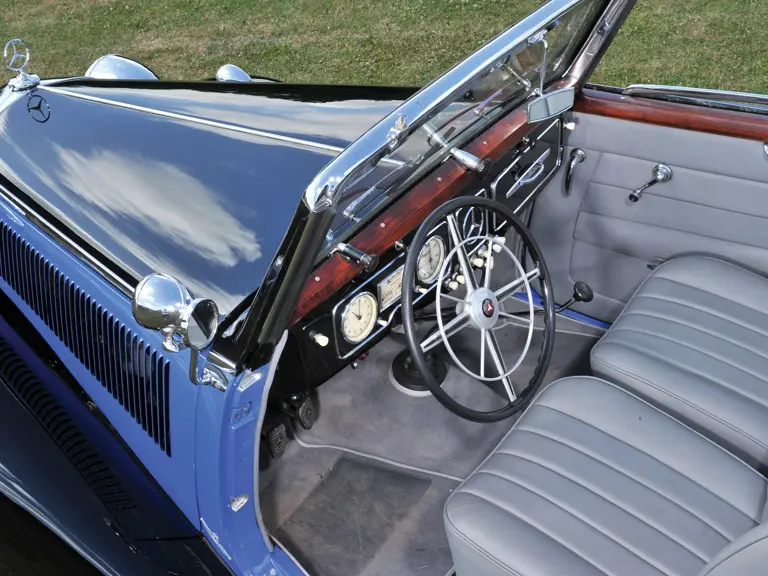


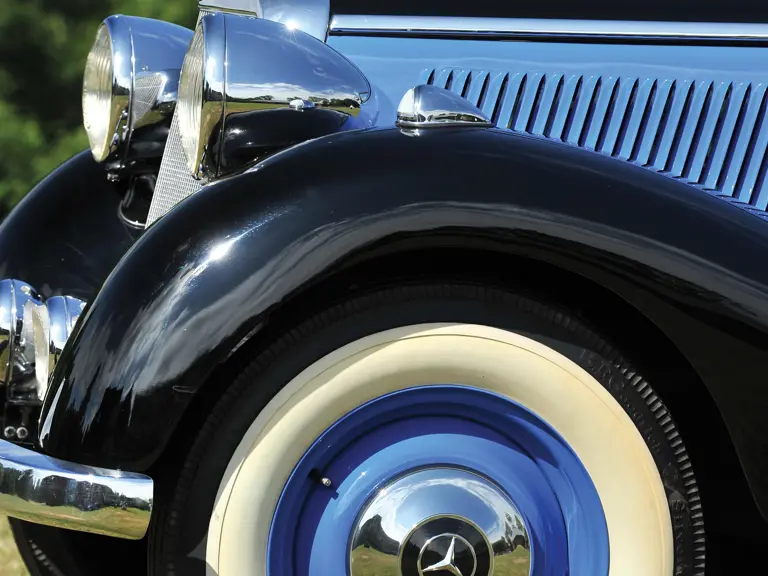
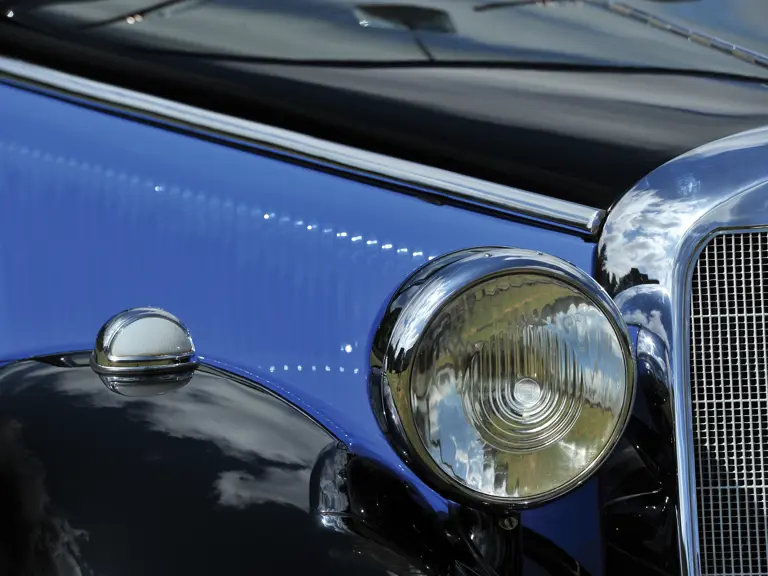
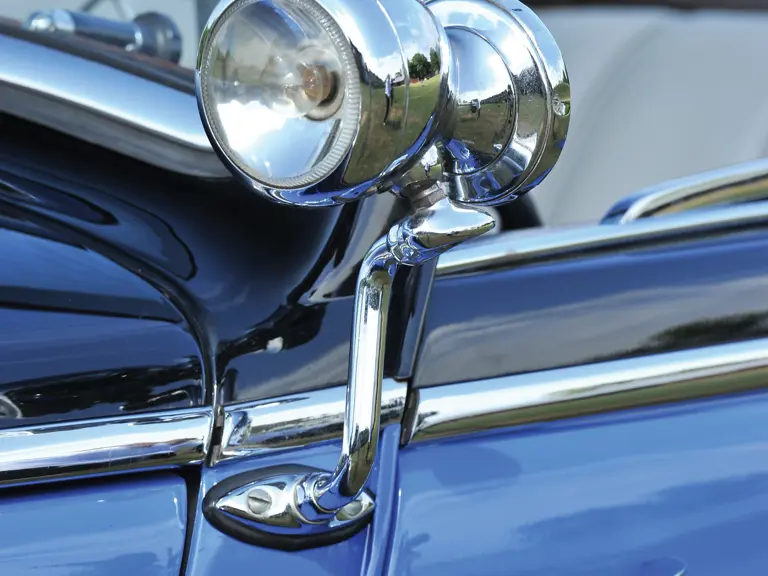
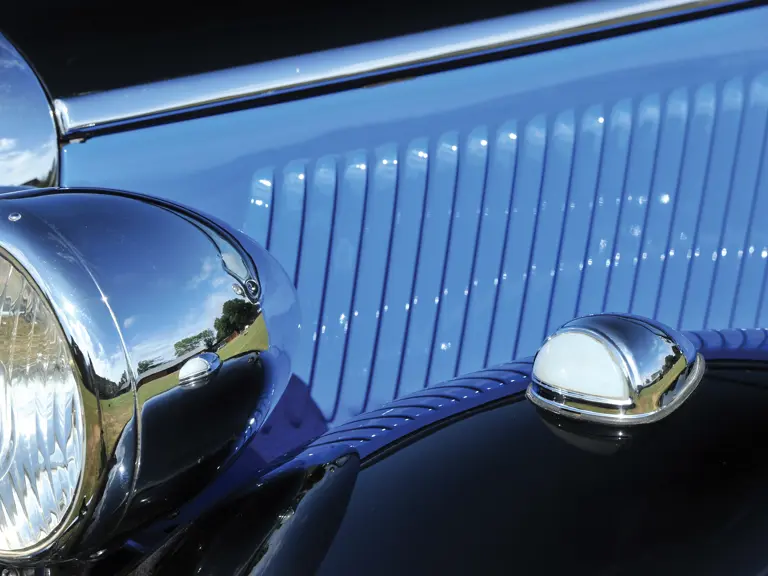
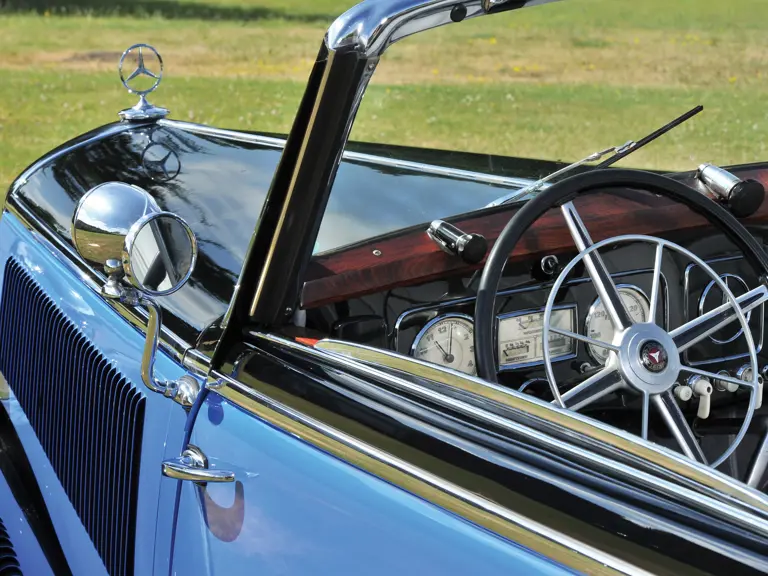
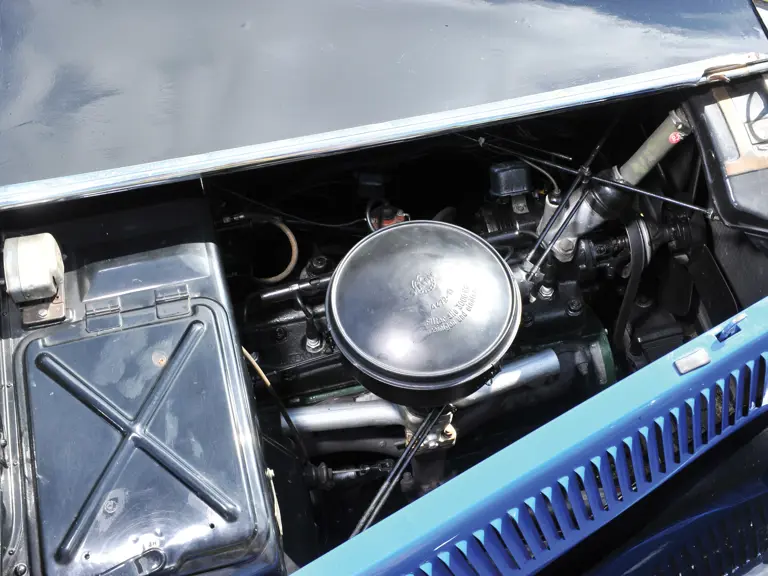
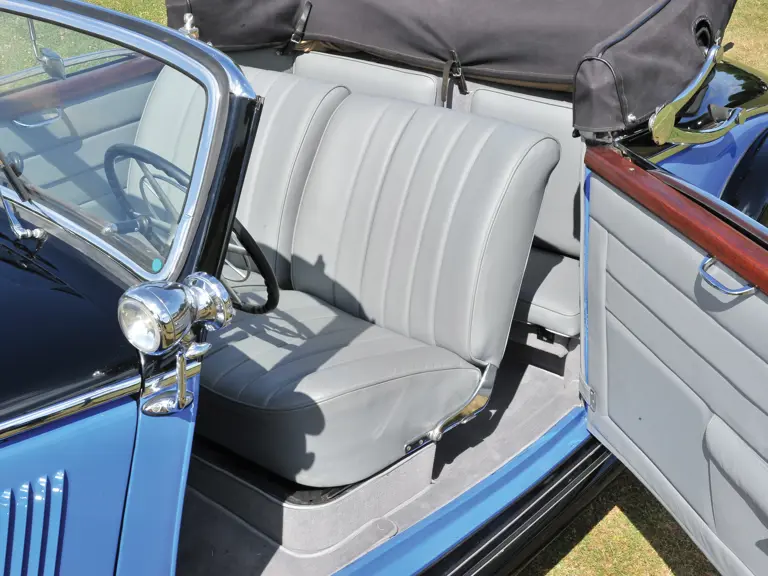

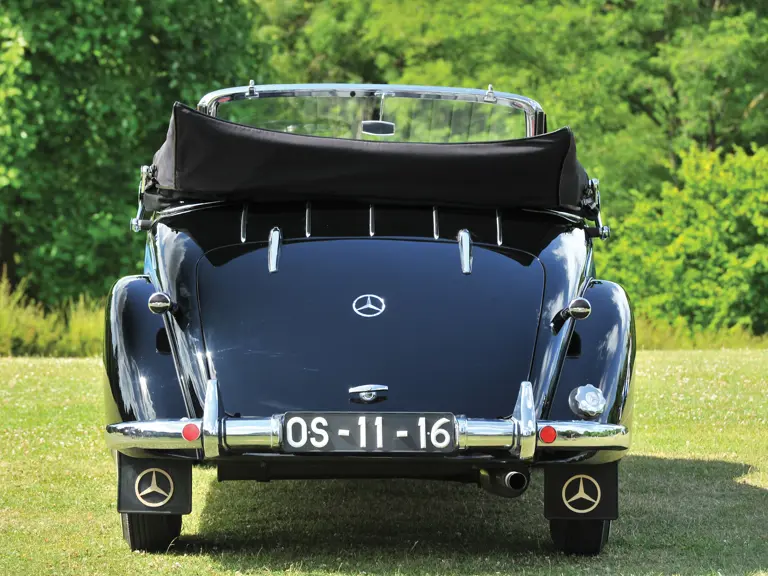
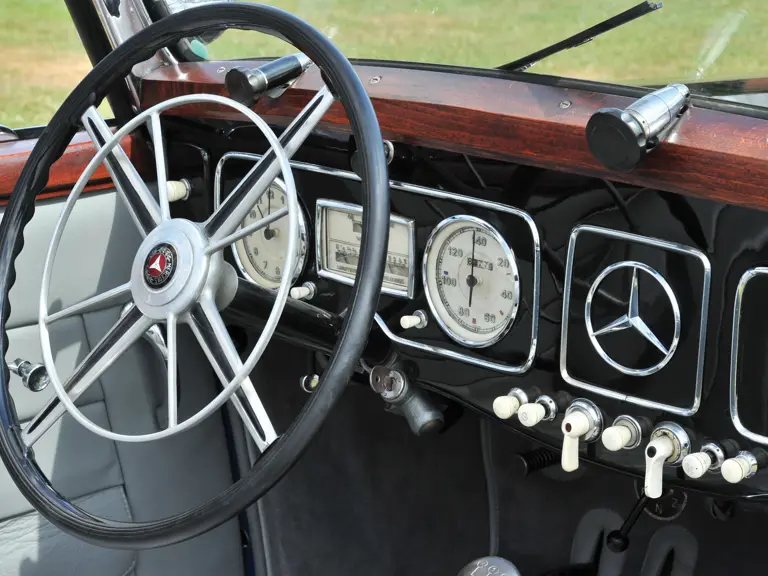
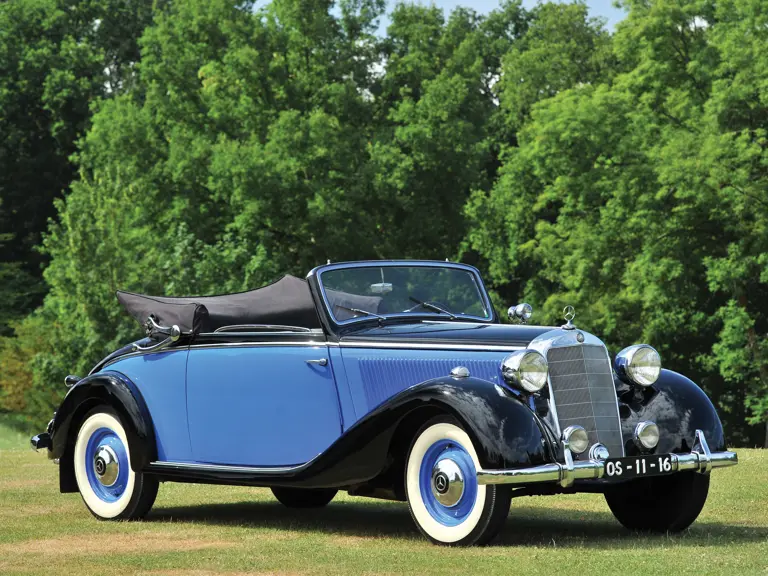
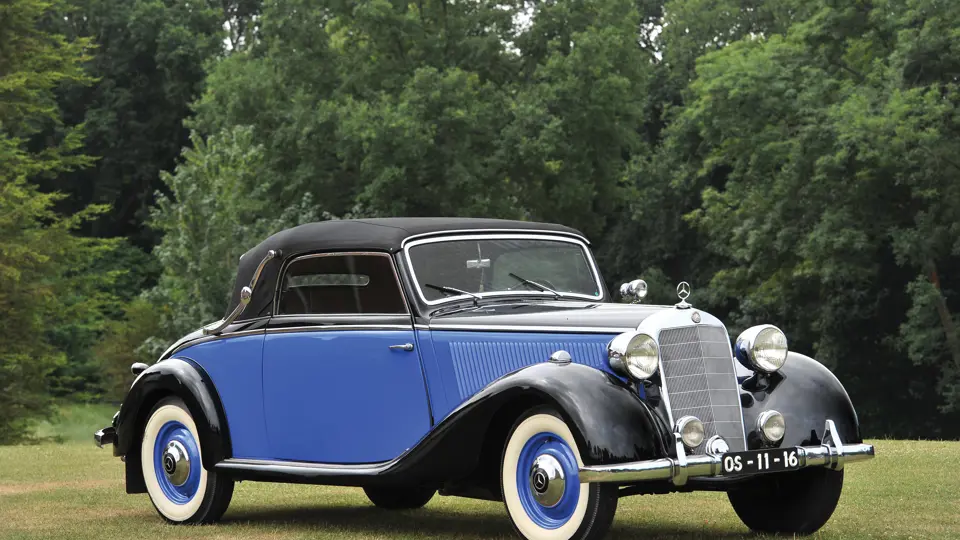
 | London, United Kingdom
| London, United Kingdom
